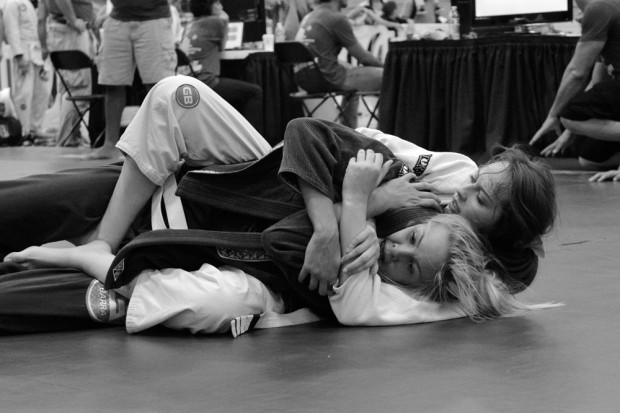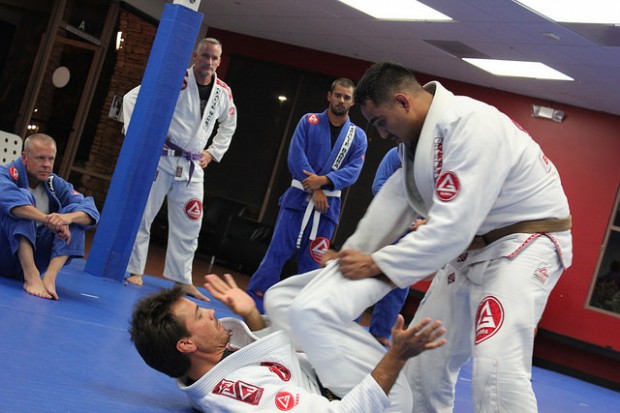How Your Black Belt Professor Can Help You Build Your "A Game"
In my previous article What Is The Role of Your Professor in Your BJJ Training? I outlined some of the less obvious ways your black belt professor helps you develop your bjj. This week we are going to delve into a more personal aspect of bjj: How your instructor helps you develop your “A game”.
read also: Developing Your “A” Game – Tips on Finding Your Strongest Positions
The Japanese use a word in many of the judo dojos: “Sensei”. Roughly translated, this means “one who has gone before”. Your black belt instructor has likely spent 10+ years on the mats and has seen a lot! They understand the stages of your journey in bjj and can save you YEARS of wasted effort in improving your own jiu-jitsu.
The concept of “A game” is ones highly personal expression of the larger art. An exceptional black belt professor knows not only their own personal game, but also other positions that they themselves may not use too much, but that a student might use effectively.
They can help you find your own “A game” in these ways:
Build a balanced bjj game
It is very natural for a student to develop preferences in how they roll early on. And it is also common to be seduced by early success in a certain position and then place all of their focus on getting good at open guard instead of paying equal attention to things like passing guard or escapes. An experienced professor can see the tendencies of the student and help them correct the imbalance in their training.
Let me use 2 separate student cases to illustrate this point:
1) I observed a student that loved to play deep half guard and had some success against higher belts using the position. They would immediately look to start sparring in this position and get their grips. But seldom did I see him able to capitalize on the top position and submit after the sweep. He had few options from the top once he got there.
Unable to control the top position, he would soon be reversed and surrender his mount or side control and end up once again on bottom. Majority of his matches went the same way and he was stalled in his overall progress. I advised that student to spend more time balancing their top position attacks. He needed to get out of his comfort zone and build a more equal top and bottom game.

2) Conversely, I saw a larger student who was a more natural athlete often able to get to the top position and submit some more experienced belts. However, when they encountered a heavier opponent (even one with much less experience) who forced them to defend from their guard, they had few options and were dramatically less effective.
They would be stalled and ineffective and would just try to sweep to get back on top. If he couldn’t sweep, he had no way to win. I pointed this out to the student and advised them to start more of their rolls from the bottom position to gain more time working from their guard.
I said “I know that you can get to the top position. But what if you end up on the bottom? You need to spend the time working on your guard.” The nature of a fight or roll is unpredictable and the student with complete bjj is able to defend themselves effectively in each of the major positions in bjj.
There will always be someone who can put you on your back and you NEED both a top and bottom game. So if we examine both situations, I gave seemingly contradictory advice to the 2 students!
Sometimes students need the opposite advice from each other!

* One extra way your bjj instructor can help you develop your “A game”
When your instructor is watching you roll, he can see things from a distance that you may not in the midst of the match. He can spot “blind spots” in your game where you might often find yourself in a position where you do not have the best technique.
Once your professor becomes familiar with your rolling style, strengths and weaknesses they can suggest additional techniques for you to combine with what you are already good at.
Example: One student was very comfortable getting to and attacking from his closed guard. However, when the opponent stood and negated the effectiveness of the closed guard, the student would be frozen, unsure of what to do when the position changed.
I recommended that he work on some techniques from the seated/ hand in the collar guard as it was naturally connected and complimentary to what he liked to do. In this situation, we are building on an existing base of what the student already feels comfortable with.
Instead of looking at each different type of guard as completely separate, he starts to see how he can combine the 2 complimentary guards and build a more advanced game. All centred around his initial strong points.

Ask your professor the following question:
“I feel comfortable controlling and attacking my opponent from “INSERT POSITION”. What other connected positions should I look at learning in order to expand on my existing strengths?”
Now you are connecting the different parts of your game and really developing an “A game!”
read also: What Should I Work On? Part 2
Credits: Mark Mullen
Gracie Barra Black belt based in Taipei, Taiwan
Twitter: @MarkMullenBJJ
